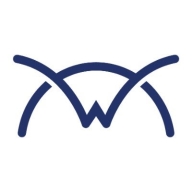


ScreenConnect and Claroty Platform offer solutions in remote control and industrial security respectively. ScreenConnect demonstrates superiority in remote access due to its persistence and flexibility, while Claroty excels in comprehensive industrial threat management.
Features: ScreenConnect provides persistent remote access with a versatile toolset, enabling secure connections even behind firewalls. It supports persistent connections post-reboot and offers a wide range of deployment modes. Claroty offers secure remote access integrated with robust security features for industrial environments, including asset visibility, threat detection, and integration with third-party tools for unified insights.
Room for Improvement: ScreenConnect would benefit from allowing custom usernames and improving its documentation and setup process. It faces challenges with dual-monitor support and high-quality setting lags on Windows 10. Claroty's UI could be simplified for ease of use, with enhanced IT integration and more comprehensive protocol support. Its detection tools need refinement for zero-day attacks, and some users suggest competitive pricing and better training materials.
Ease of Deployment and Customer Service: ScreenConnect supports hybrid and on-premises models, offering a straightforward setup and reliable customer support. Claroty offers hybrid cloud support, with users noting quality customer service and rapid response times, ensuring favorable setup experiences for both solutions.
Pricing and ROI: ScreenConnect is competitively priced with simple licensing options, delivering a strong ROI by cutting travel costs and boosting efficiency. Claroty is positioned as a premium solution, its price justified by extensive security measures, though users seek more competitive pricing. Both solutions offer considerable returns on investment, enhancing savings and productivity.
Everything we've gained from it makes my job easier day after day, and I see value in it as an engineer.
Microsoft Intune not only saves costs by reducing the number of personnel needed but also offers a comprehensive solution for managing laptops, applications, security, individual access, and enrollment.
Importantly, when someone leaves the company, it helps protect document access on their devices.
If my infrastructure is critical infrastructure, the Claroty Platform saves time and resources.
When a support ticket is submitted, it directly reaches someone with Intune support expertise.
When I contacted Microsoft, they had the same expertise, if not more, which is phenomenal because I felt heard and my problem was solved.
Sometimes, the support provided is excellent, and the representative is knowledgeable, while other times, the service needs improvement.
Their response and support are effective and proactive.
They can rate support for the Claroty Platform from one to ten as eight to nine.
I have always found Claroty's technical support to have good engineers.
The scalability of Microsoft Intune is ten out of ten.
Ideally, we want to automatically segregate devices based on user properties like primary use, but currently, dynamic groups seem limited to device properties.
It supports organizations with 200 endpoints and those with more than 15,000 endpoints.
The Claroty Platform offers a scalable solution that accommodates both cloud and on-premise deployments.
I would rate the scalability as eight or nine as the only issue faced was with login challenges, which could be improved.
The way the Claroty Platform has considered and included the active scanning part has made it quite scalable.
We have not experienced downtime, bugs, or glitches.
It appears Microsoft Intune undergoes changes without informing customers.
Microsoft Intune has been very stable.
The platform runs with minimal delays and effectively manages workloads without intruding on the network.
Overall, I would rate the stability as eight out of ten.
Features like unlocking devices sometimes fail, and the support offered for other operating systems is insufficient.
There are communication issues, so you might start working with a feature without knowing if it will be deprecated six months from now.
Many third-party companies offer single-pane-of-glass reporting that shows you what your update environment looks like, how your patch is doing, application status, etc., but Intune's reporting is not intuitive.
Additionally, reducing the overall cost of hardware and software solutions would be beneficial.
As AI is booming now, there are concerns about AI security.
Sometimes, these CVEs are not actually related to the device in the firmware at the site.
Introductory professional services, like a fast-track service, were included with our E5 membership, and there have been no additional costs.
The Intune suite and add-ons, such as batch management and remote help, are costly.
It costs approximately forty euros per user per month.
One unique aspect of Claroty is that users get all the deployments for free.
The cost of the Claroty Platform is comparatively high.
The cost is as per the standard market.
Intune excels in configuration and compliance management for Windows 10, ensuring devices receive timely updates and adhere to organizational standards.
Dynamic groups allow us to set conditions for automatic membership, eliminating the need for user intervention or manual review and ensuring a seamless workflow.
Windows Autopatch is the most valuable because it removes the burden of patch management.
The ability to detect and classify assets, assess vulnerabilities, and manage patches and updates effectively is highly beneficial.
They offer threat detection, asset management, vulnerability management, and remote access, which makes them the sole vendor in the OT security space to offer all three services.
Additionally, their SRA solution, the Secure Remote Access solution, is very useful for industrial environments.
| Product | Market Share (%) |
|---|---|
| Microsoft Intune | 9.6% |
| Claroty Platform | 1.1% |
| ScreenConnect | 1.8% |
| Other | 87.5% |



| Company Size | Count |
|---|---|
| Small Business | 116 |
| Midsize Enterprise | 46 |
| Large Enterprise | 152 |
| Company Size | Count |
|---|---|
| Small Business | 4 |
| Midsize Enterprise | 1 |
| Large Enterprise | 11 |
| Company Size | Count |
|---|---|
| Small Business | 15 |
| Midsize Enterprise | 6 |
| Large Enterprise | 7 |
Microsoft Intune provides centralized management of mobile devices and applications, ensuring security, compliance, and productivity through integration with Microsoft services like Microsoft 365 and Azure Active Directory.
Organizations use Intune for managing mobile devices and applications, enhancing security and compliance across platforms. With features like single sign-on, conditional access, and zero-touch deployment via Autopilot, it facilitates efficient operations. Intune's scalability, easy enrollment, and capabilities such as remote wipe support diverse device management, offering robust data protection and efficient operation. Despite its features, improvement areas include reporting, compatibility with non-Microsoft devices, and better support for macOS and Linux devices.
What are the key features of Microsoft Intune?
What benefits should users look for in reviews?
In industries such as finance, healthcare, and education, Microsoft Intune is implemented to ensure secure and compliant device management. Companies leverage its capabilities to deploy security policies and manage both corporate-owned and BYOD environments, facilitating a unified approach to data protection and compliance.
The Claroty Platform is tailored for monitoring and securing industrial control systems. It offers deep visibility into OT networks, enabling effective anomaly detection and vulnerability assessments. Its user-friendly interface and robust reporting tools facilitate easy management and compliance, enhancing organizational efficiency and cybersecurity posture in industrial environments.
ScreenConnect offers seamless connections to desktops, mobiles, and other devices with top-tier security features. Empowering businesses through customizable branding, it facilitates real-time problem-solving and adapts to specific access needs with granular control.
ScreenConnect stands out by providing robust remote access solutions, enhanced with security like AES-256 encryption and two-factor authentication. Users appreciate the customization options, enabling them to white-label software to reflect their brand. The Support Premium edition includes ScreenConnect View, a live streaming feature assisting with real-time hardware troubleshooting through mobile cameras. It integrates smoothly with existing systems, offering unattended access, automatic reconnection, and session recording. However, there's room for improvement in user configuration options, file transfer capabilities, and security recognition. Overall, it supports a wide range of devices and browsers, ensuring session continuity even through reboots, making the setup process straightforward.
What are the key features of ScreenConnect?Businesses apply ScreenConnect for remote support, assisting with IT tasks and troubleshooting, often using unattended access functionalities. It's popular among teams of various sizes, aiding companies in managed services and client interactions. The tool's effectiveness makes it suitable for on-site-like remote assistance, though improvements in dual monitor management and domain integration are desired. User feedback highlights the necessity for enhanced onboarding, more intuitive configuration, and advanced reporting features, making it a versatile choice for remote support across industries.
We monitor all Remote Access reviews to prevent fraudulent reviews and keep review quality high. We do not post reviews by company employees or direct competitors. We validate each review for authenticity via cross-reference with LinkedIn, and personal follow-up with the reviewer when necessary.